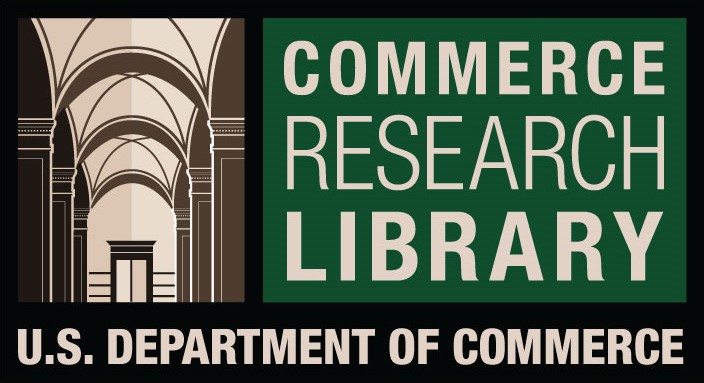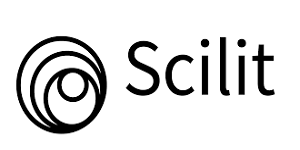Psychometric Properties of Spence Children’s Anxiety Scale in Nigerian Primary Schools: Implication for Community Development
DOI:
https://doi.org/10.61841/wtjxqd33Keywords:
Community development, Psychometric properties, Spence children’s anxiety scale, Nigerian primary schoolsAbstract
This study sought the psychometric properties of Spence children’s anxiety scale in Nigerian primary schools in terms of exploratory and confirmatory factor analysis. A sample of 252 pupils randomly sampled in primary schools in Enugu state Nigeria was used for the study. Spence children’s anxiety scale (SCAS) was adopted and validated. Principal component analysis with varimax rotation was used for the determination of the factors of the SCAS. After that, the extracted factors were subjected to confirmatory factor analysis to determine the model fit for the data using International Business Machines, Statistical Package for Social Sciences, Analysis of a Moment Structures (IBM SPSS AMOS). The analysis showed that the items of the subscales of SCAS had good internal consistency reliability indices with an overall reliability index of 0.890 and an estimate of the temporal stability of 0.943. The data also had a good model fit with confirmatory factor index (CFI) of 0.980 and root mean square error of approximation (RMSEA) of 0.039. SCAS is a reliable instrument that can be used to identify signs of academic anxiety among children in schools. This finding implicates community development of the children in the sense that when the children’s experience of anxietyare properly handled using the SCAS, they will better contribute to the development of their communities when they come of age.
Downloads
References
1. Abbo, C., Kinyanda, E., Kizza, R. B., Levin, J., Ndyanabangi, S., & Stein, D. J. (2013). Prevalence,
comorbidity and predictors of anxiety disorders in children and adolescents in rural north-eastern
Uganda. Child and adolescent psychiatry and mental health, 7(1): 1-11.
2. Chavira, D.A., Stein, M.B., Bailey, K., et al. (2004). Child anxiety in primary care: prevalent but
untreated. Depress Anxiety, 20:155–64.
3. Direktör, C&Serin, N.B (2017). Psychometric Properties of Spence Children’s Anxiety Scale (SCAS).
EURASIA Journal of Mathematics Science and Technology Education, 13(10), 6625-6636 DOI:
10.12973/ejmste/78194
4. DOI 10.1007/s10578-011-0232-7
5. Ene, C.U., Ugwuanyi, C.S., Okeke, C.I.O., Nworgu, B.G., Okeke, A.O., Agah, JJ., Oguguo, B.C., Ikeh,
F.E., Eze, K.O., Ugwu, F.C., Agugoesi, O.J., Nnadi, E.M., Eze, U.N., Ngwoke, D.U., & Ekwueme, U.H.
(2021). Factorial Validation of Teachers’ Self-Efficacy Scale using Pre-Service Teachers: Implications
for Teacher Education Curriculum. International Journal of Higher Education, 10(1).
https://doi.org/10.5430/ijhe.v10n1p113
6. Essau, C.A., Anastassiou-Hadjicharalambous, X &Mun˜oz, L.C. (2011). Psychometric Properties of the
Spence Children’s Anxiety Scale (SCAS) in Cypriot Children and Adolescents. Child Psychiatry Hum
Dev, 42, 557–568
7. Essau, C.A., Leung, P.W.L., Conradt, J., Cheng, H. & Wong, T (2008). Anxiety symptoms in Chinese
andGerman adolescents: their relationship with early learning experiences, perfectionism and
learningmotivation. Depress Anxiety, 25, 801–810
8. Essau, C.A., Muris, P&Ederer, E.M (2002). Reliability and validity of the Spence Children’s Anxiety
Scaleand the screen for child anxiety related emotional disorders in German children. J BehavTher Exp
Psychiatry, 33, 1–18.
9. Essau, C.A., Sakano, Y., Ishikawa, S&Sasagawa, S (2004). Anxiety symptoms in Japanese and in
Germanchildren. Behav Res Ther, 42, 601–612
10. Essau, C.A., Sasagawa, S., Anastassiou-Hadjicharalambous, X., OlayaGuzma´n, B &Ollendick, T.M
(2011). Psychometric properties of the Spence Child Anxiety Scale with adolescents from five
Europeancountries. J Anxiety Disord, 25, 19–27.
11. Ishikawa, S., Sato, H. &Sasagawa, S (2009). Anxiety disorder symptoms in Japanese children and
adolescents.J Anxiety Disord, 23, 104–111
12. Karakaya, E., &Oztop, D. B. (2013). Kaygıbozukluğuolançocukveergenlerdebilişseldavranışçıterapi.
BilişselDavranışçıPsikoterapiveAraştırmaDergisi, 2,10-24.
13. Mellon, R.C. &Moutavelis, A.G (2007). Structure, developmental course, and correlates of children’s
anxietydisorder-related behaviour in a Hellenic community sample. J Anxiety Disord, 21, 1–21
14. Muris, P., Schmidt, H., Engelbrecht, P & Perold, M (2002). DSM-IV-defined anxiety disorder symptoms
inSouth African children. J Am Acad Child Adolesc Psychiatry, 41:1360–1368
15. Nwokolo, C., Mokwelu, O.B & Eneasator, U. E. (2016). Effects of Meditation Technique on Test
Anxiety Among Secondary School Students in Anambra State, Nigeria. European Scientific Journal,
13(32). http://dx.doi.org/10.19044/esj.2017.v13n32p271
16. Spence, S.H (1998). A measure of anxiety symptoms among children. Behav Res Ther., 36, 545–566
17. Spence, S.H., Barrett, P.M & Turner, C.M (2003). Psychometric properties of the Spence Children’s
AnxietyScale with young adolescents. J Anxiety Disord, 17, 605–625
18. Spence. S.H (1997). The structure of anxiety symptoms among children: a confirmatory factor
analyticstudy. J Abnorm Psychol 106, 280–297
19. Sweeney, L., Rapee, R.M., Crozier, W.R& Alden, L.E. (2005).Social anxiety in children and
adolescents: psychological treatments. The Essential Handbook of Social Anxiety for Clinicians New
York, NY: John Wiley & Sons, Ltd; 153–65.
20. Ugwuanyi, C.S.,& Okeke, C.I.O. (2020). Psychometric Properties of the Pain Self-Efficacy
Questionnaire Using Nigerian University Students with Chronic Pain. Indian Journal of Public Health
Research & Development, 11 (6):1517-
1522.https://scholar.google.com/scholar?hl=en&as_sdt=0%2C5&q=Ugwuanyi%2C+C.S.%2C+%26+Ok
eke%2C+C.I.O.+%282020%29.+Psychometric+Properties+of+the+Pain+Self-Efficacy+Questionnaire+
Using+Nigerian+University+Students+with+Chronic+Pain.+Indian+Journal+of+Public+Health+Researc
h+%26+Development%2C+11+%286&btnG=
21. Ugwuanyi, C.S., Ene, C.U., Okeke, C.I.O., Eze, U.U, Okeke, A.O., &Ikeh, F.E. Factorial Validation of
Children's Depression Inventory in Primary Schools in Nigeria. International Medical Journal, 28(1), 12
– 15. Website: https://www.imj-1994.com/
22. Whitaker, S.J., Lowe, P &Lee, S. (2007). Significant predictors of test anxiety among students with and
without learning disabilities. Journal of Learning Disabilities, 40(4),360–76.
doi:10.1177/00222194070400040601
23. Whiteside, S.P.& Brown, A.M (2008). Exploring the utility of the Spence Children’s Anxiety Scales
parentandchild-report forms in a North American sample. J Anxiety Disord., 22,1440–1446
Downloads
Published
Issue
Section
License
You are free to:
- Share — copy and redistribute the material in any medium or format for any purpose, even commercially.
- Adapt — remix, transform, and build upon the material for any purpose, even commercially.
- The licensor cannot revoke these freedoms as long as you follow the license terms.
Under the following terms:
- Attribution — You must give appropriate credit , provide a link to the license, and indicate if changes were made . You may do so in any reasonable manner, but not in any way that suggests the licensor endorses you or your use.
- No additional restrictions — You may not apply legal terms or technological measures that legally restrict others from doing anything the license permits.
Notices:
You do not have to comply with the license for elements of the material in the public domain or where your use is permitted by an applicable exception or limitation .
No warranties are given. The license may not give you all of the permissions necessary for your intended use. For example, other rights such as publicity, privacy, or moral rights may limit how you use the material.












